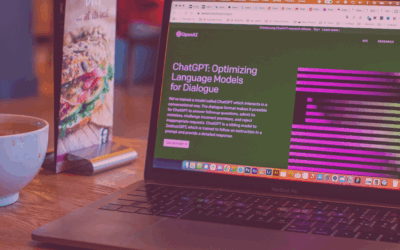- Keyword Research
- On-page SEO
- Relevant Content
- Qualifying Websites
- Custom Content
- Regular Backlink Audits
On-Page Optimization
On page-optimization is everything that goes into your actual website from title tags and h tags to alt image text. Here is how to start optimizing your website today:
1. Keyword Research
Google uses keywords to know what each landing page is talking about.
When creating a landing page and getting it to rank, focus on these things:
- Choose one specific keyword or keyword string that you plan on targeting
- Target your low hanging fruit (organically ranking keywords)
To find the low-hanging fruit, start by finding all of the keywords that you are currently ranking for. Once you have a list of keywords you are currently ranking for, do an analysis of what would be the most effective terms to start ranking for.
Choosing keywords in positions 11-20 is the most efficient because they are close to page one but not quite there.
If you are trying to rank for a keyword that you aren’t already ranking for organically, make sure to build out a custom landing page.
The reason being that you want to make sure that your landing page is hyper-focused to that specific keyword or keyword string so that Google knows exactly what information you are sharing on that page.
2. On-Page SEO
This is the more technical side of SEO. It is important that Google can crawl your site and get to each page as well as know exactly what information it will find on each page before it starts crawling the body.
To help Google crawl your site effectively, you need the following aspects:
- A title tag for each landing page that includes the target keyword in it.
- A consistent and clean URL structure so that just by looking at the URL users will know exactly what they are going to find.
- A meta description for each landing page. (This is the 150-160 words that show up below the page title and URL shown on Google.)
- Headers or h tags. These show Google what the main topics of the article are. The focus keyword should show up periodically through the headers.
- Internal linking is also essential to make sure that Google can navigate through your website and index each landing page
- Your site speed needs to be fast so that when people click on your website from Google, they won’t have to sit and wait for your site to load for more than a second. Things like larger pictures on your site can slow down your speed.
3. Relevant Content
Content will always be king and one of the main drivers in ranking higher on Google and engagement.
If you are providing consistent relevant content that people are engaging with, Google will recognize and reward you for it. Your landing pages should provide content that will provide users with value.
You also need to make sure that your target keyword is appearing enough times in the body of your landing page.
To do this, you should use a TFIDF to find out how often your keyword should appear in the body of the article and to find secondary keywords that should also be brought up throughout the article.
When Google crawls your page and sees that you are talking about terms that are also being brought up in similar websites that are ranking for your desired keyword, they determine that your page is also relevant and will start to push it up the rankings.
Off-Page Optimization
Just as the name describes, off-page optimization is everything that helps your keyword rank higher on Google that is not on your website.
To better understand, think of the internet as a spider web. As websites link back to your landing page, you become more connected and more relevant.
The main aspect of off-page SEO is receiving links from other websites back to your landing page.
4. Qualifying Websites
Not all backlinks are made the same. When you start to grow your backlink profile, you need to make sure that the websites linking back to you are actually helping your website increase in ranking.
Here are website metrics to look for when starting your link building campaign:
- Website is Indexed
- This is the first thing to check because if the website you are getting links to is not indexed, then Google isn’t crawling their site at all.
- Do-Follow Links
- Do follow links are links that are crawled by Google. If a no-follow code is placed on your backlink, it is telling Google not to pass authority back to your site. These links do little to help your website rank higher.
- High Domain Authority
- Domain Authority or DA is the measure of how authoritative a website is. Websites that have a DA of lower than 20 are usually sites that don’t publish content consistently and don’t have a high level of organic traffic going to their site. Sites like this do little to help increase your rankings. Your target DA for backlinking should be around 40 DA or higher to have the biggest impact on your ranking.
- High Organic Traffic
- Organic traffic is the number of monthly users that go on the website. You want a site with high organic traffic because they are more authoritative than sites that have low organic traffic.
- Relevant Organic Keywords
- The sites linking back to you should also rank for their own keywords organically. If they have a high DA and are ranking organically for a lot of relevant keywords, you know that your link on their site will help to bump up your rankings.
- Clean Website Appearance & Low Spam Score
- Clean website appearance and low spam score are important in terms of user intent. People tend to stay away from spammy, messy websites, so they will not help your rankings as much.
5. Custom Content
The content that you post on blogs and guest posting sites should be original content.
When content is duplicate, Google marks it as spammy and doesn’t pass authority back to your site. Something important to note is that link-building articles don’t need to be hyper-focused on your keyword like the on-site SEO does.
Link-building articles should be similar to a target. If your keyword is the bullseye, then the topic of the article should be in the outer ring of the bullseye.
The article should be relevant to the keyword however, it should be much broader. This does not take away from the authority that will be passed to your website.
In fact, it ensures that your article is extremely relevant to the website it is posted to.
6. Regular Backlink Audits
You need to make sure that you check all of the links that are going to your different landing pages regularly.
This is essential because websites that linked to you in the past can change rankings. This would affect your own rankings poorly if they have been marked as spam in the past.
With this in mind, backlink diversity is important to maintain on your landing pages.
Backlink diversity means that you shouldn’t have 100 percent of your links coming from highly authoritative sites with dofollow links and DA 60 plus.
You also want to make sure that you have some nofollow links mixed in as well as links to lower DA sites so that Google sees your backlinks as organic and keeps your rankings high.
Final Thoughts
Remember, your change in rankings won’t happen overnight. Patience is the key when it comes to ranking higher on Google.
Reach out to our team of SEO experts for any questions or inquiries.



